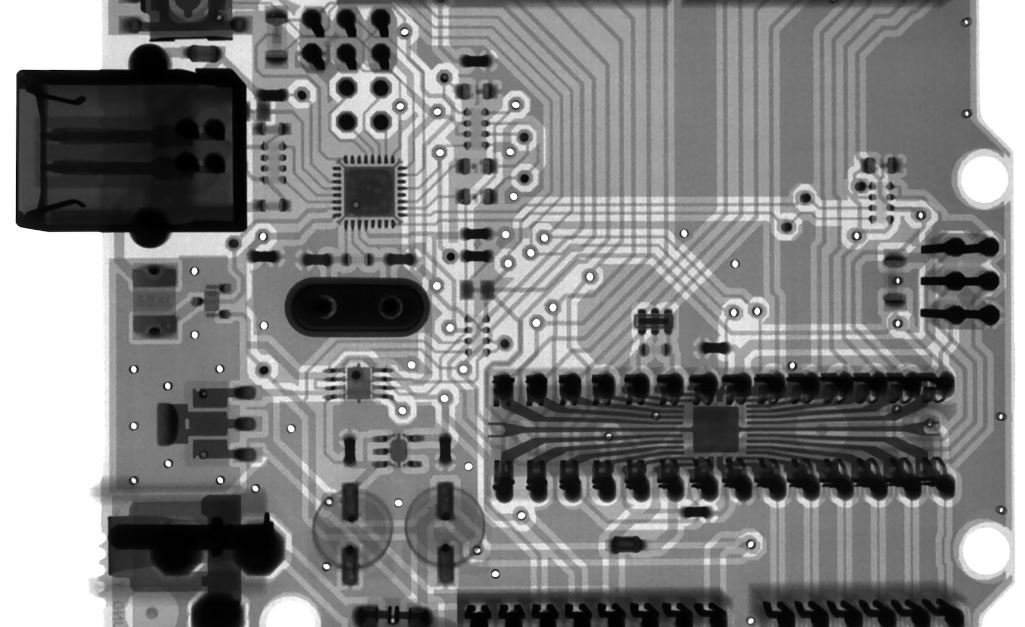Neural Net Meaning
A neural net, short for neural network, is a computation model inspired by the human brain’s interconnected neural system. It is a network of interconnected artificial neurons that can process and learn from data, enabling the development of artificial intelligence systems.
Key Takeaways:
- A neural net is a computer-based model inspired by the human brain.
- It consists of interconnected artificial neurons.
- Neural nets can process and learn from data.
- They are used in building artificial intelligence systems.
**Neural nets** are designed based on the idea that the brain can be simulated through artificial means. They consist of **artificial neurons** that mimic the behavior of biological neurons to process and transmit information. These artificial neurons are interconnected in layers, forming a network. Each neuron takes input from other neurons, processes it using an activation function, and passes the output to other connected neurons. This mimics the information processing in the brain.
**Artificial neural networks** excel at **pattern recognition** and learning from large volumes of data. One interesting aspect of neural nets is that they can generalize from the training data to make predictions or classify new, unseen data. This ability to learn and generalize is what makes neural nets valuable for tasks such as image and speech recognition, natural language processing, and autonomous systems.
**Deep learning**, a subfield of neural networks, involves networks with many layers. These deep neural networks can automatically learn hierarchical representations of data, enabling them to extract complex features and patterns. The depth in a neural network refers to the number of hidden layers it has. The greater the number of hidden layers, the deeper the network is, allowing it to learn more abstract and layered patterns.
Types of Neural Networks:
- Feedforward Neural Networks
- Most common type of neural net.
- Information travels in one direction, from input to output layer.
- Widely used in classification and regression tasks.
- Recurrent Neural Networks
- Designed for sequence data.
- Contain loops, allowing information to flow back through the network.
- Used in tasks like speech and text generation, language modeling, and time series analysis.
- Convolutional Neural Networks
- Designed for analyzing visual data like images and videos.
- Use specialized layers for feature extraction and spatial hierarchy.
- Commonly used in computer vision tasks such as object recognition and image classification.
- Generative Adversarial Networks
- Consist of a generator and a discriminator network.
- The generator creates synthetic data, while the discriminator tries to distinguish between real and fake data.
- Used in generating new content, such as images, music, and text.
| Neural Network | Application |
|---|---|
| Feedforward Neural Network | Classification and regression tasks |
| Recurrent Neural Network | Speech and text generation, language modeling, time series analysis |
| Convolutional Neural Network | Object recognition, image classification |
| Generative Adversarial Network | Generating new content: images, music, text |
Neural nets are trained using a technique called **backpropagation**, which adjusts the connection weights between neurons to minimize the difference between predicted and desired outputs. This process iteratively updates the weights, allowing the network to learn from labeled training data.
**Artificial intelligence** systems powered by neural networks have revolutionized various industries, including healthcare, finance, marketing, and autonomous vehicles. They can automate tasks, provide intelligent insights, and make accurate predictions, leading to improved efficiency, decision-making, and customer experiences.
Applications of Neural Networks:
- Image and speech recognition
- Natural language processing
- Autonomous driving and robotics
- Fraud detection
- Stock market prediction
| Industry | Application |
|---|---|
| Healthcare | Medical image analysis, disease diagnosis |
| Finance | Stock market prediction, credit scoring |
| Marketing | Customer segmentation, personalized recommendations |
| Transportation | Autonomous driving, traffic prediction |
Neural nets have become powerful tools for solving complex problems and advancing the field of artificial intelligence. As technology continues to evolve, we can expect neural networks to play an even greater role in shaping the future of various industries, from healthcare to finance.
Next time you encounter a sophisticated AI system, remember that neural nets form the foundation of its intelligence and decision-making capabilities.

Common Misconceptions
Misconception 1: Neural Networks are just like the human brain
One common misconception is that neural networks function in the same way as the human brain. While neural networks are loosely inspired by the structure and function of the brain, they are significantly simplified and do not possess the complexity and capabilities of the human brain.
- Neural networks lack consciousness and self-awareness.
- Neural networks cannot make subjective judgments or have emotions.
- Neural networks require extensive training and optimization by humans.
Misconception 2: Neural Networks are infallible and always accurate
Another misconception is that neural networks are always accurate and infallible in their predictions and decisions. While neural networks can be very powerful tools, they are not immune to errors or biases.
- Neural networks are only as good as the data they are trained on.
- Neural networks can be susceptible to biases present in the training data.
- Neural networks may struggle with interpreting and handling unexpected or novel data.
Misconception 3: Neural Networks can replace human intelligence
There is often a misconception that neural networks have the potential to completely replace human intelligence and decision-making. While neural networks can automate certain tasks and assist in decision-making processes, they cannot replicate the full range of human cognitive abilities.
- Neural networks lack common sense reasoning and contextual understanding.
- Neural networks lack creativity and abstract thinking.
- Neural networks cannot possess intentionality or consciousness.
Misconception 4: Neural Networks are always black boxes
Many people believe that neural networks are incomprehensible black boxes that cannot provide insights into their decision-making process. However, efforts have been made to address the interpretability and transparency of neural networks.
- Researchers have developed methods to interpret and visualize the internal workings of neural networks.
- Techniques like attention mechanisms and saliency maps help identify important features and patterns influencing the network’s decision.
- Neural networks can provide explanations for their predictions through techniques like integrated gradients and LIME.
Misconception 5: All neural networks are deep neural networks
Some people mistakenly assume that all neural networks are deep neural networks, which are neural networks with multiple hidden layers. While deep neural networks have gained significant attention and popularity recently, there are different types of neural networks with varying architectures.
- Shallow neural networks have fewer hidden layers than deep neural networks.
- Convolutional neural networks are commonly used for image processing tasks.
- Recurrent neural networks are designed to handle sequential data like text or time series.

The History of Neural Networks
Neural networks have a rich history that dates back to the 1940s when the first model was developed. Over the years, significant advancements have been made, leading to more powerful and efficient neural networks. The following table illustrates some key milestones in the history of neural networks:
| Year | Event |
|---|---|
| 1943 | Model of a biological neuron proposed by McCulloch and Pitts. |
| 1958 | Perceptron, the first neural network, developed by Frank Rosenblatt. |
| 1986 | Backpropagation algorithm developed by Rumelhart, Hinton, and Williams. |
| 1997 | Long Short-Term Memory (LSTM) architecture introduced by Hochreiter and Schmidhuber. |
| 2012 | Deep convolutional neural networks achieve breakthrough performance in image classification. |
Applications of Neural Networks
Neural networks find applications in various fields, transforming the way we solve complex problems. The table below showcases some fascinating applications of neural networks:
| Field | Application |
|---|---|
| Healthcare | Diagnosing diseases based on medical images with high accuracy. |
| Finance | Predicting stock market trends and optimizing trading strategies. |
| Transportation | Autonomous vehicles capable of navigating complex road conditions. |
| Marketing | Targeted advertising campaigns based on user behavior analysis. |
| Robotics | Teaching robots to perform intricate tasks through reinforcement learning. |
Neural Network Architectures
There are several types of neural network architectures, each suited for specific tasks. Here are some notable architectures and their characteristics:
| Architecture | Description |
|---|---|
| Feedforward Neural Networks | Information flows in one direction, without cyclic connections. |
| Recurrent Neural Networks (RNNs) | Allow feedback connections, making them capable of processing sequential data effectively. |
| Convolutional Neural Networks (CNNs) | Designed for image and video analysis, utilizing convolutional layers for feature extraction. |
| Generative Adversarial Networks (GANs) | Consist of two networks: a generator that produces synthetic data, and a discriminator that distinguishes between real and generated data. |
| Self-Organizing Maps (SOMs) | Utilize unsupervised learning to create low-dimensional representations of high-dimensional data. |
Neural Networks vs. Traditional Algorithms
Neural networks have gained prominence due to their ability to outperform traditional algorithms in various domains. The following table highlights some advantages of neural networks over conventional methods:
| Aspect | Neural Networks | Traditional Algorithms |
|---|---|---|
| Learning Ability | Can learn from massive amounts of data without explicit programming. | Require manual feature engineering and fine-tuning. |
| Pattern Recognition | Capable of recognizing complex patterns and nonlinear relationships. | Generally effective for simple patterns and linear relationships. |
| Flexibility | Can adapt to new data and tasks with minimal changes to the network structure. | Often require redesign or reimplementation for new data or tasks. |
| Parallel Processing | Capable of parallel processing, enabling faster computations. | Sequential processing, which can be slower for large datasets. |
Challenges in Neural Network Training
Training neural networks can be a complex task, and various challenges need to be addressed to achieve optimal performance. The following table outlines some common challenges in training neural networks:
| Challenge | Explanation |
|---|---|
| Overfitting | When the network learns the training data too well but fails to generalize to unseen data. |
| Vanishing/Exploding Gradients | Gradient values become extremely small or large during backpropagation, hindering training. |
| Local Minima | The network gets stuck in suboptimal solutions, unable to reach the global minimum. |
| Data Insufficiency | Insufficient or unrepresentative data can limit the network’s ability to generalize well. |
| Computational Resources | Training large-scale deep neural networks can demand significant computational power and time. |
Neural Network Benchmark Datasets
Benchmark datasets are crucial for evaluating the performance of new neural network models. Here are some widely used benchmark datasets:
| Dataset | Description |
|---|---|
| MNIST | A collection of hand-drawn digits used for image classification tasks. |
| CIFAR-10 | Consists of 60,000 32×32 color images categorized into ten classes for object recognition. |
| IMDB Movie Reviews | A sentiment analysis dataset with movie reviews labeled as positive or negative. |
| UCI Mushroom | A dataset for classifying edible and poisonous mushrooms based on various attributes. |
| Stanford Natural Language Inference (SNLI) | A dataset designed for natural language understanding and textual entailment tasks. |
The Future of Neural Networks
Neural networks continue to evolve and shape the future of artificial intelligence and machine learning. Exciting advancements and areas of interest include:
| Advancement | Impact |
|---|---|
| Explainable AI | Developing neural networks that can provide transparent explanations for their decisions and predictions. |
| Neuromorphic Computing | Designing hardware architectures inspired by the human brain to improve neural network efficiency. |
| Transfer Learning | Enabling models trained on one task to be applied to other related tasks, reducing the need for extensive training data. |
| Reinforcement Learning | Expanding the use of neural networks in autonomous systems and robotics through continuous learning and decision-making. |
| Edge Computing | Optimizing neural networks to run on devices with limited computational resources, enabling real-time AI applications. |
As neural networks continue to advance, they are revolutionizing industries and pushing the boundaries of what machines can achieve. With their ability to learn, adapt, and process complex information, neural networks hold the key to unlocking the full potential of artificial intelligence.
Frequently Asked Questions
Q: What is a neural net?
A: A neural net, short for a neural network, is a computational system inspired by the human brain’s biological neural network. It is an interconnected system of artificial neurons that process information and learn from it.
Q: What are the components of a neural net?
A: A neural net consists of multiple layers of interconnected artificial neurons, with each neuron performing basic information processing. These layers typically include an input layer, one or more hidden layers, and an output layer.
Q: How does a neural net learn?
A: A neural net learns through a process called training. During training, the weights and biases of the neurons are adjusted in response to input data and desired output. This adjustment process, often using algorithms like backpropagation, helps the neural net improve its ability to make accurate predictions or classifications.
Q: What are the common applications of neural nets?
A: Neural nets have a wide range of applications in various fields. They are commonly used in image and speech recognition, natural language processing, recommendation systems, and even autonomous vehicles.
Q: What are the advantages of using neural nets?
A: Neural nets can handle complex and unstructured data, adapt to changing environments, and learn patterns and relationships in large datasets. They are also capable of parallel processing and can handle tasks that traditional programming approaches struggle with.
Q: Are there any limitations to neural nets?
A: Neural nets may require large amounts of training data to be effective. They can be computationally intensive and may take longer to train compared to traditional algorithms. Additionally, neural nets are often viewed as black boxes, making it challenging to interpret their inner workings.
Q: Can neural nets be used for real-time applications?
A: Yes, neural nets can be used for real-time applications. However, the complexity of the neural net architecture and the size of the input data can impact their real-time performance. Careful design and optimization are necessary to ensure efficient and timely results.
Q: How do you evaluate the performance of a neural net?
A: The performance of a neural net can be evaluated using various metrics depending on the specific task. Common evaluation measures include accuracy, precision, recall, F1 score, and mean squared error, among others. Cross-validation and test sets are often used to assess generalization and prevent overfitting.
Q: Can neural nets be combined with other machine learning techniques?
A: Absolutely! Neural nets can be combined with other machine learning techniques to enhance performance. For example, convolutional neural networks (CNNs) are often used in conjunction with traditional machine learning algorithms for image classification tasks, leveraging the strengths of both approaches.
Q: Are there different types of neural nets?
A: Yes, there are various types of neural nets designed for specific tasks. Some popular variations include feedforward neural networks, recurrent neural networks (RNNs), long short-term memory (LSTM) networks, and convolutional neural networks (CNNs), each tailored for different data structures and problem domains.




